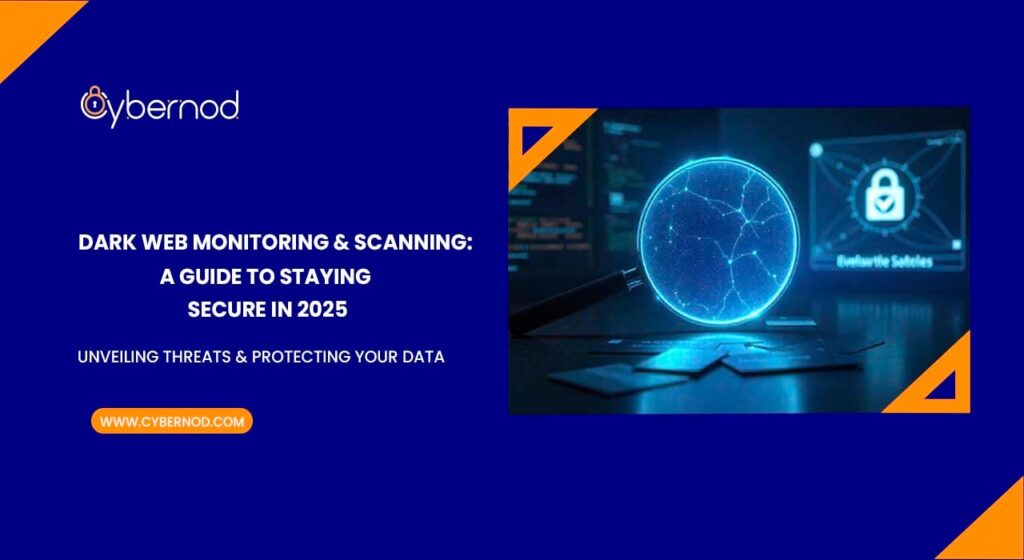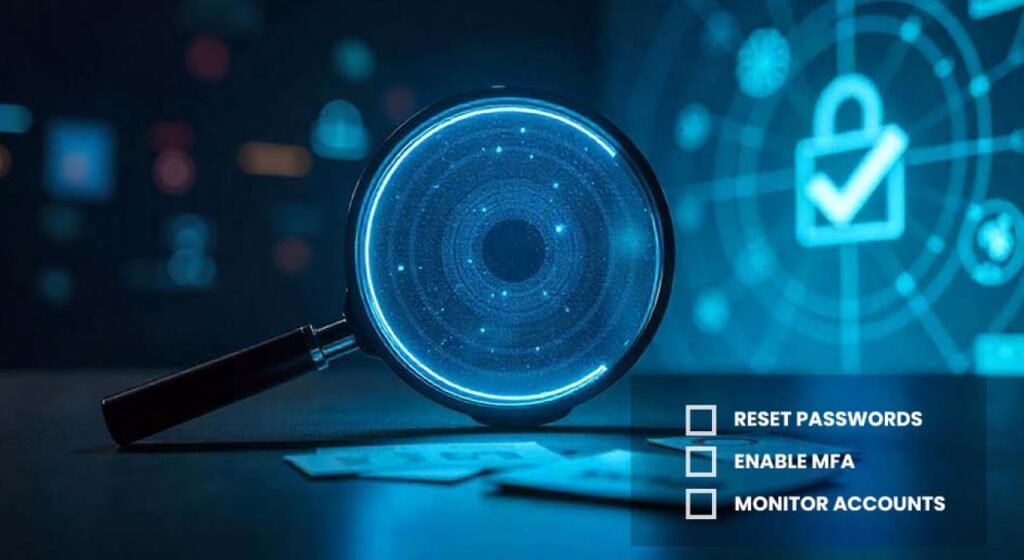
Cybersecurity threats are evolving faster than ever, and the Dark Web remains a prime marketplace for stolen data. Businesses that want to stay secure must utilize Dark Web monitoring and scanning tools. Here’s a comprehensive guide, updated for 2025, to help you safeguard sensitive information.
What Is Dark Web Scanning?
Dark Web scanning involves searching the Dark Web for stolen data related to individuals or organizations. If sensitive information such as passwords, usernames, or payment details is found, businesses receive alerts to mitigate potential damage.

Dark Web Monitoring vs. Scanning: Key Differences
Although these terms are frequently used interchangeably, they have distinct purposes:
| Feature | Dark Web Scanning | Dark Web Monitoring |
|---|---|---|
| Purpose | One-time activity to detect breached data | Ongoing service to provide real-time alerts |
| Frequency | Manual or occasional scans | Continuous and automated |
| Proactive vs. Reactive | Reactive—addresses past breaches | Proactive—alerts before damage escalates |
| Best For | Individuals or small businesses | Enterprises and high-risk organizations |
Why Monitor the Dark Web in 2025?

In 2024, data breaches are expected to grow more sophisticated, targeting both personal and corporate data. Monitoring the Dark Web allows businesses to:
- Protect Sensitive Credentials: Prevent attackers from exploiting stolen usernames, passwords, or financial data.
- Mitigate Cyberattacks: Early detection enables businesses to block unauthorized access and reduce damage from ransomware or phishing schemes.
- Stay Compliant: Comply with GDPR, CCPA, and other data protection regulations by identifying breaches promptly.
- Safeguard Brand Reputation: Quickly addressing breaches builds customer trust and minimizes reputational damage.
Common Threats Found on the Dark Web
Cybercriminals trade a wide array of stolen data on the Dark Web:
| Data Type | Potential Use by Cybercriminals |
|---|---|
| Customer Databases | Launch phishing attacks, impersonate businesses |
| Login Credentials | Access corporate systems, install malware |
| Payment Information | Conduct fraudulent transactions, steal funds |
| Employee Information | Target employees for social engineering attacks |
| Intellectual Property | Sell or use sensitive trade secrets |
Action Plan: What to Do After a Data Breach

If a breach occurs, take these steps immediately:
- Reset Passwords: Ensure all accounts use strong, unique passwords.
- Enable Multi-Factor Authentication (MFA): Implement an additional layer of security to enhance account protection.
- Monitor Accounts: Regularly review financial and social media accounts for any signs of unusual or unauthorized activity.
- Freeze Credit: Restrict access to your credit report to prevent unauthorized use or fraudulent activities.
- Notify Authorities: Report stolen credentials or identity theft to the appropriate agencies.
- Engage Continuous Monitoring: Sign up for a Dark Web monitoring service to prevent future breaches.
Why Cybernod's Dark Web Monitoring Solution Is Essential in 2025
Cybernod offers state-of-the-art Dark Web monitoring services to help businesses stay one step ahead of attackers. Our solution provides:
- 24/7 Real-Time Alerts: Immediate notifications when your data is found on the Dark Web.
- Proactive Risk Mitigation: Identify vulnerabilities before they are exploited.
- Compliance Support: Meet legal and regulatory reporting requirements with ease.
- Actionable Insights: Expert advice to address vulnerabilities and prevent future breaches.
Emerging Trends in Dark Web Monitoring

- AI-Powered Scanning: Advanced AI algorithms are enhancing the speed and accuracy of detecting compromised data.
- Integration with SIEM: Businesses are integrating Dark Web monitoring with SIEM solutions for centralized security management.
- Focus on Employee Education: Companies are prioritizing employee training to avoid phishing scams and credential theft.
- Zero-Trust Security Models: Businesses are adopting zero-trust frameworks to reduce the impact of breached credentials.
Side Tips to Boost Your SEO in 2025
- Keyword Strategy: Focus on high-intent keywords like “Dark Web monitoring tools,” “Dark Web scanning services,” and “preventing data breaches.”
- Structured Content: Use tables, flowcharts, and bullet points to improve readability and rank higher in search results.
- Voice Search Optimization: Include conversational phrases like “What is Dark Web monitoring?” or “How to protect against data breaches.”
- Update Content Regularly: Keep your articles fresh by incorporating the latest trends and statistics.
- Leverage Multimedia: Add engaging infographics, images, and videos to increase user retention.
- Backlink Strategy: Partner with reputable cybersecurity blogs to increase your site’s domain authority.
- Mobile Optimization: Ensure your site is responsive and fast-loading on mobile devices.
Make Cybersecurity a Priority in 2025
Cybersecurity is no longer optional—it’s a necessity. Cybernod’s advanced Dark Web monitoring services are here to keep your data and business safe.
Categorized in:
Comments